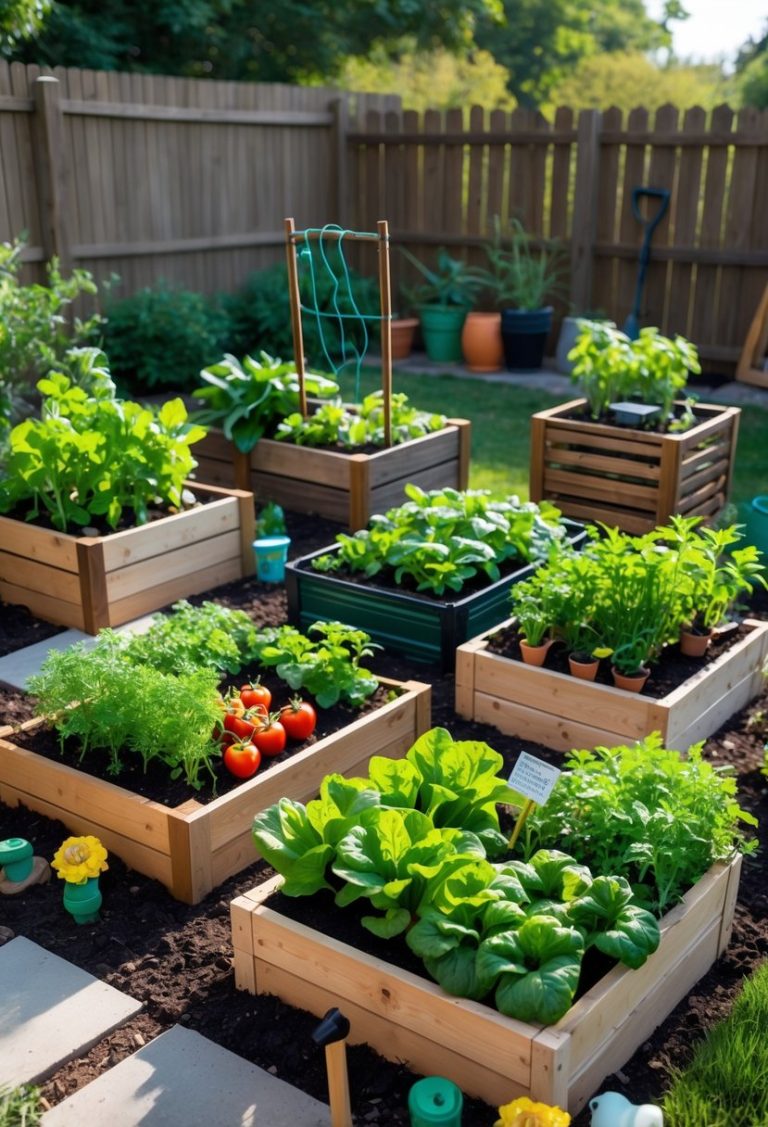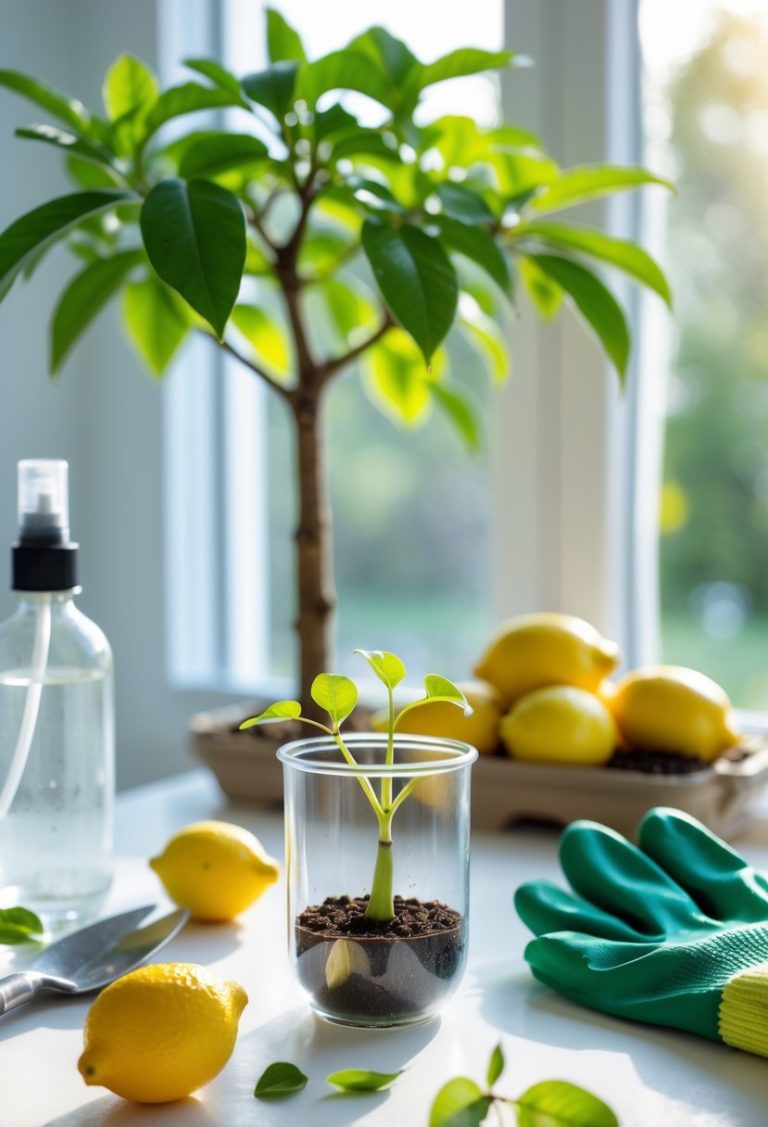How to Grow Leeks: Essential Tips for a Healthy Harvest
Leeks are a cool-season vegetable that anyone can grow with the right care and attention. They need well-prepared soil, plenty of water, and some patience as they grow slowly but steadily. The best way to grow leeks is to start with either seeds or transplants, keep the soil moist, and make sure they get enough sunlight.

Leeks are hardy and can even survive light frosts, making them a great choice for longer harvesting periods, sometimes even through winter. They require regular feeding and protection from pests to grow well. Understanding how to plant, water, and care for leeks helps ensure a healthy and productive crop.
Key Takeways
- Leeks grow best in moist, well-prepared soil.
- Starting with seeds or transplants both work well.
- They need steady watering and some protection to thrive.
Essential Requirements for Growing Leeks

Growing leeks at home requires specific conditions for soil, location, and variety selection. Attention to these details helps the plants develop strong, thick stalks and healthy roots.
Optimal Soil Preparation
Leeks need fertile, well-drained soil rich in organic matter. Before planting, the soil should be loosened to at least 12 inches deep to encourage root growth. Adding compost or aged manure improves texture and nutrient content.
The soil pH should be slightly acidic to neutral, ideally between 6.0 and 7.0. Avoid heavy clay soils that hold water and cause root rot.
Leeks benefit from continuous moisture but not soggy conditions. Mulching helps conserve water and suppress weeds. Fertilizing with a balanced fertilizer every few weeks supports steady growth.
Choosing the Best Location
Leeks grow best in full sun but tolerate light shade. A spot that receives at least 6 hours of direct sunlight daily is ideal. This encourages strong, tender stalks.
Choose a location with good air circulation to reduce fungal diseases. Avoid planting leeks near beans and peas, as these can stunt leek growth.
Because leeks prefer cooler weather, planting in a place sheltered from harsh wind helps protect the plants. Gardeners often plant leeks in trenches to blanch the stalks and keep them tender.
Leek Varieties and Their Differences
There are many leek varieties, each suited for different climates and harvest times.
Some varieties mature early, such as the “King Richard,” which is ready in about 100 days. Others, like “Musselburgh,” mature later and grow larger.
Varieties also differ in stalk thickness and color. For home gardeners, choosing a variety adapted to their USDA Hardiness Zone ensures better success. Cool-season zones 7 to 9 are generally best for most leeks.
Selecting varieties based on harvest time can allow for a longer growing season with continuous planting.
Methods for Planting Leeks

Leeks can be planted in several ways depending on the gardener’s resources and needs. Starting from seed gives full control over variety, while using scraps offers a quick regrowth option. Transplanting seedlings helps ensure strong plants in the garden.
How to Grow Leeks from Seed
Growing leeks from seed begins indoors. Sow seeds thinly about ¼ inch deep in a seed tray or small pots with good-quality potting mix. Keep the soil moist and in a warm place, ideally around 70°F (21°C), to encourage germination.
Seeds usually sprout in two weeks. Once seedlings have a few leaves, thin them so they don’t crowd each other. After the risk of frost passes, transplant the seedlings outdoors into trenches or rows, spacing them 6-8 inches apart. This method helps produce tender, uniform leeks.
More detailed guidance on planting leeks from seed can be found at howtogroweverything.com.
How to Grow Leeks from Scraps
Leeks can also grow from scraps, making use of leftover root ends from store-bought leeks. Cut the white base with roots intact and soak it in shallow water. Place in a sunny window or warm spot.
Change the water every couple of days. New green shoots and root growth should appear within a week. Once roots are well formed, plant the scrap in soil, burying the roots and part of the white stem. Water regularly to keep the soil moist.
This method saves money and provides a fast way to regrow leeks for harvest in a few months.
Transplanting Leek Seedlings
When leek seedlings reach 6-8 inches tall, they need to be transplanted outdoors for continued growth. Harden off seedlings by gradually exposing them to outdoor conditions over one week.
Prepare trenches 6 inches deep and plant seedlings upright, spacing them 6-8 inches apart. Fill in soil around the stems, leaving the top leaves exposed. This blanching technique helps keep the stems tender and white.
Water the transplanted seedlings well. Keep soil consistently moist but avoid waterlogging. Protect from pests like leek moth by using insect-proof mesh if needed. Transplanting seedlings increases their survival and improves harvest quality.
For more on transplanting and caring for leeks, see the guide at gardenershq.com.
Caring for Leeks Throughout the Growing Season

Leeks need steady care to grow well. Proper watering, feeding, pest management, and blanching are key to healthy plants and tasty stems.
Watering and Fertilizing Techniques
Leeks require consistent moisture, especially during dry spells. The soil should be kept evenly moist but not waterlogged to avoid root rot.
Water deeply once or twice a week, depending on rainfall. Mulching can help retain soil moisture and reduce weeds.
Fertilize leeks every 4 to 6 weeks. Use a balanced fertilizer with nitrogen to promote leafy growth. Side dress with compost or a nitrogen-rich fertilizer to keep plants strong.
Avoid over-fertilizing, which can cause leaves to grow too fast and weaken the stalk.
Effective Pest and Disease Management
Leeks can attract pests like onion maggots and leafminers. These pests lay eggs on the leaves, and the larvae damage the plant.
Use fine mesh netting over the plants during the egg-laying season (March to April and again in October to November) to prevent pests from reaching leeks.
Check plants regularly for signs of pests or disease. Remove and destroy damaged leaves to limit spread.
Crop rotation and planting leeks away from beans and peas also reduce pest problems.
Blanching Leeks for Tender Stems
Blanching creates the white, tender portion of the leek stalk. It involves piling soil around the stem to block light and prevent greening.
Once leeks are 6-8 inches tall, gardeners should “earth them up” by mounding dry soil around the stems over several weeks.
This process can be repeated two or three times to blanch as much of the stalk as desired.
Blanched stems are sweeter and less tough, perfect for cooking. Regular earthing up also helps support tall plants and keeps them upright.
Harvesting and Storing Leeks

Leeks need the right timing and handling to keep their flavor and texture. Proper digging and cleaning will protect the plants. Once harvested, storing them correctly helps extend their freshness for weeks.
Determining the Right Time to Harvest
Leeks are usually ready to harvest when their stalks reach 1 inch in diameter. This size ensures a good balance of flavor and tenderness. Most leeks take about 120 to 150 days from planting to mature.
Gardeners should look for firm, straight stalks with a pale white or light green color near the base. If growing leeks in containers, checking the thickness regularly helps avoid overgrown or woody stems.
Harvesting can be staggered by planting varieties that mature at different times. This technique extends the harvest period and offers a steady supply of fresh leeks.
Proper Harvesting Methods
To harvest, loosen the soil with a fork around the base of the leek. Gently pull the leek straight up to avoid breaking the stalk. This method limits damage to the plant and allows it to recover if harvested early.
Remove any loose soil by shaking the roots carefully. Cutting off the dark green tops with a sharp knife makes handling easier and helps prevent decay in storage.
If leeks are grown in containers, always water the soil first to soften it. This makes pulling the plants easier and reduces root breakage.
Storage Tips for Freshness
Leeks store best when wrapped in a damp paper towel and placed inside a plastic bag. Keeping them in the refrigerator this way maintains moisture and freshness for up to 10 days.
Smaller leeks tend to last longer than larger, older stalks, so use the larger ones first for the best flavor. For longer storage, leeks can be frozen after blanching or kept in a root cellar at cool temperatures.
Avoid washing leeks before storing to prevent excess moisture, which can speed up spoilage. Instead, clean them thoroughly before cooking. More details about harvesting and storing leeks can be found at Gardening Gains.






